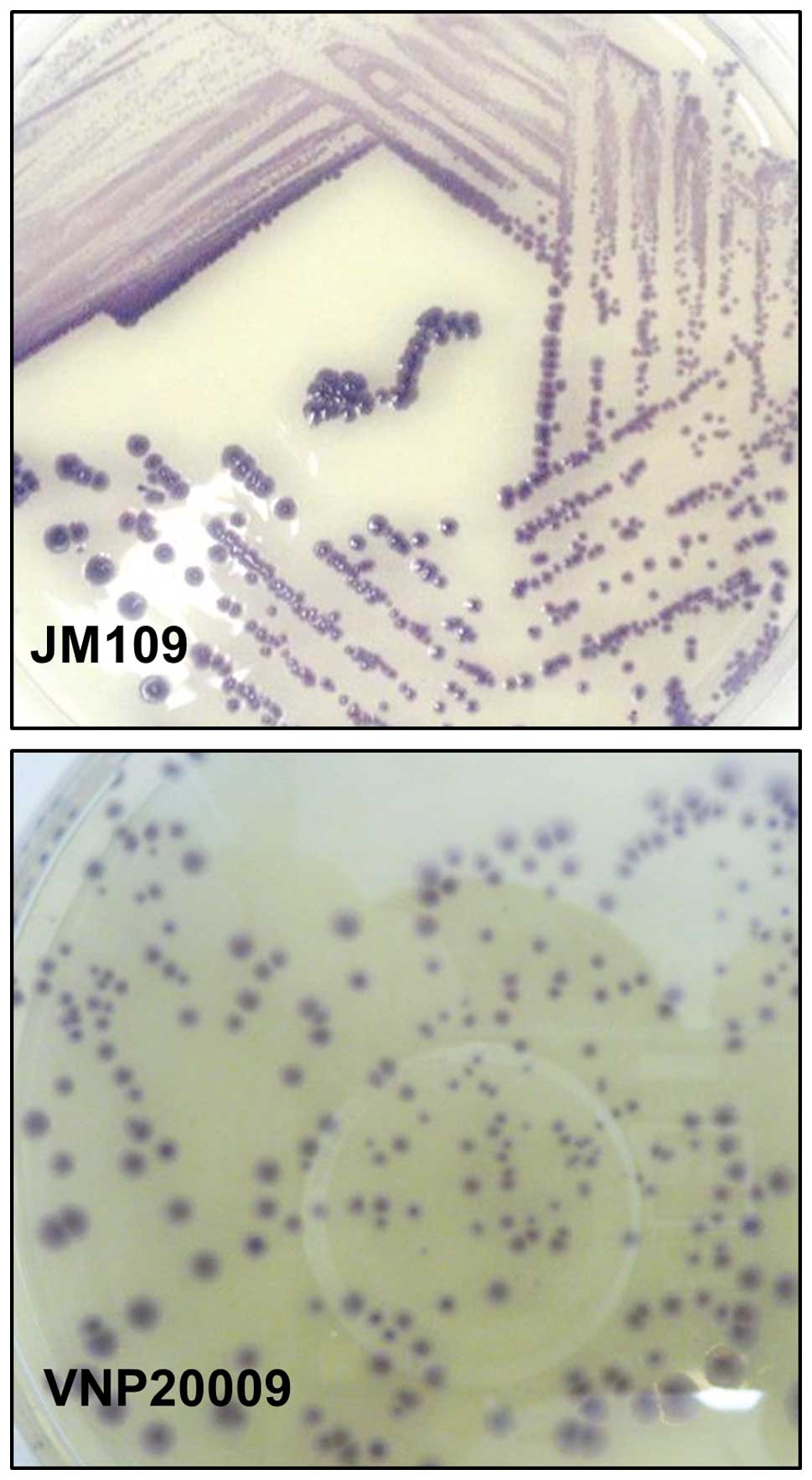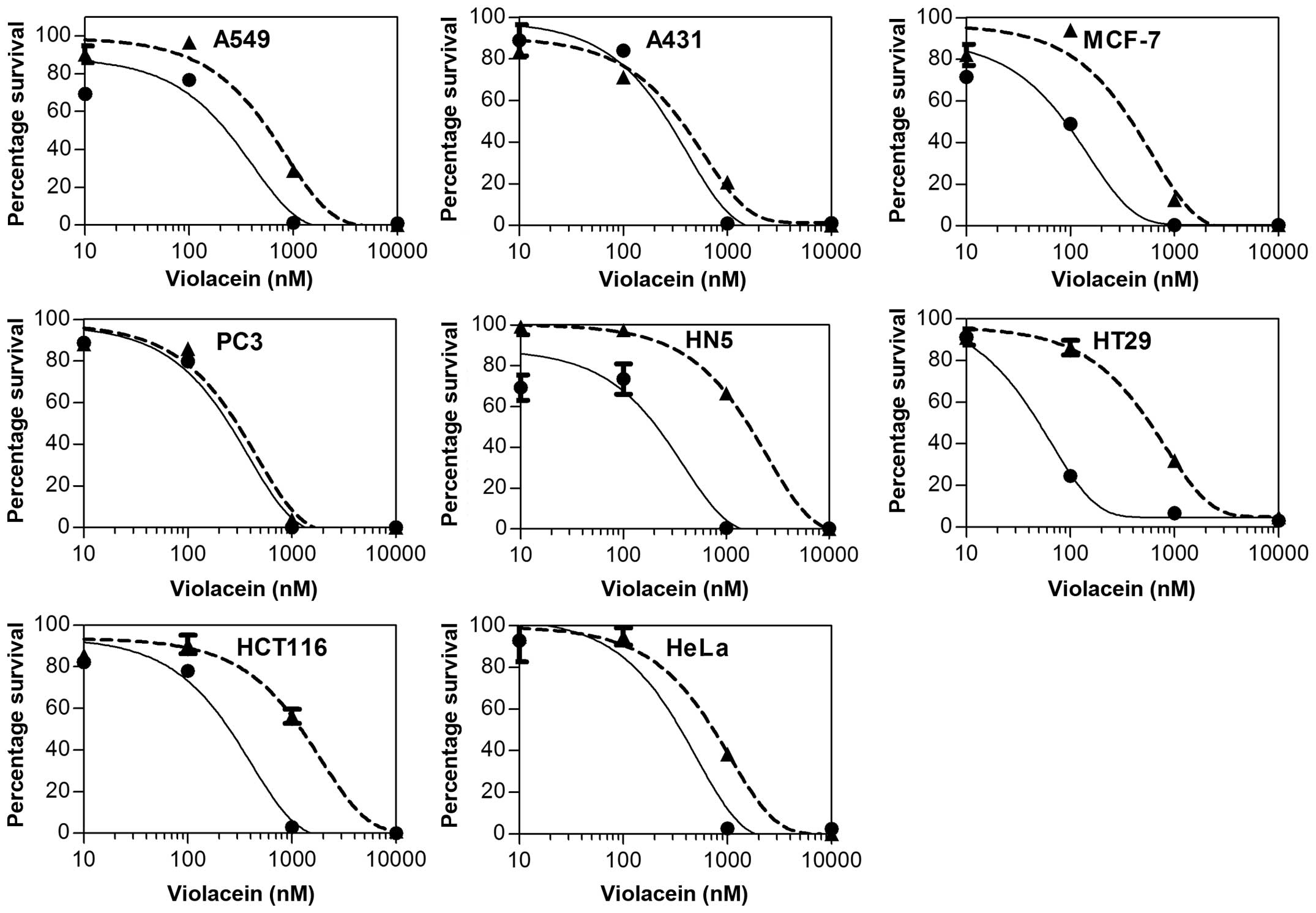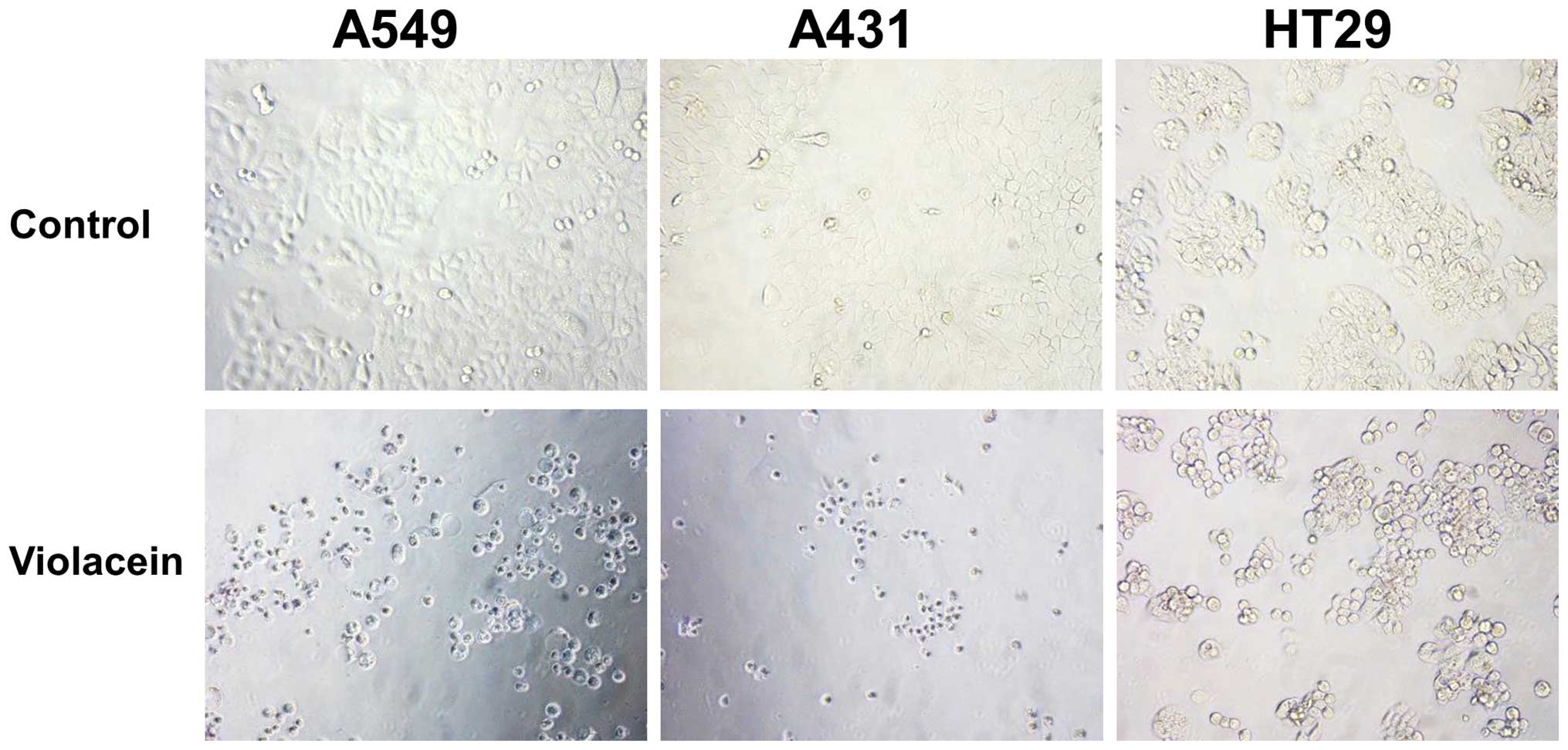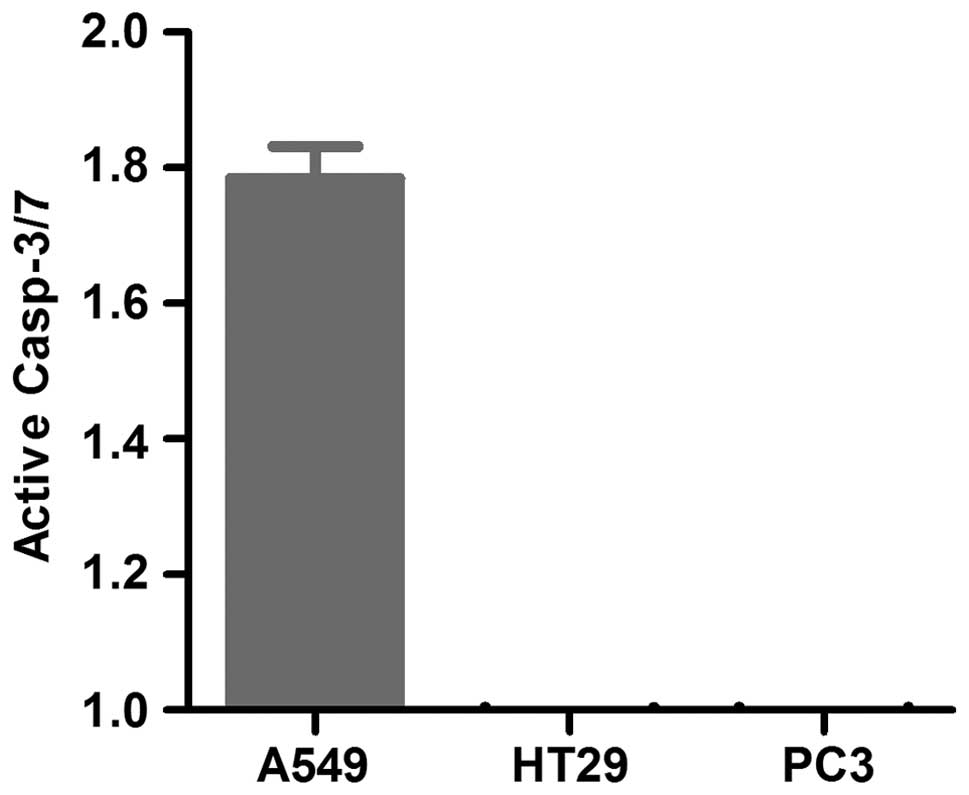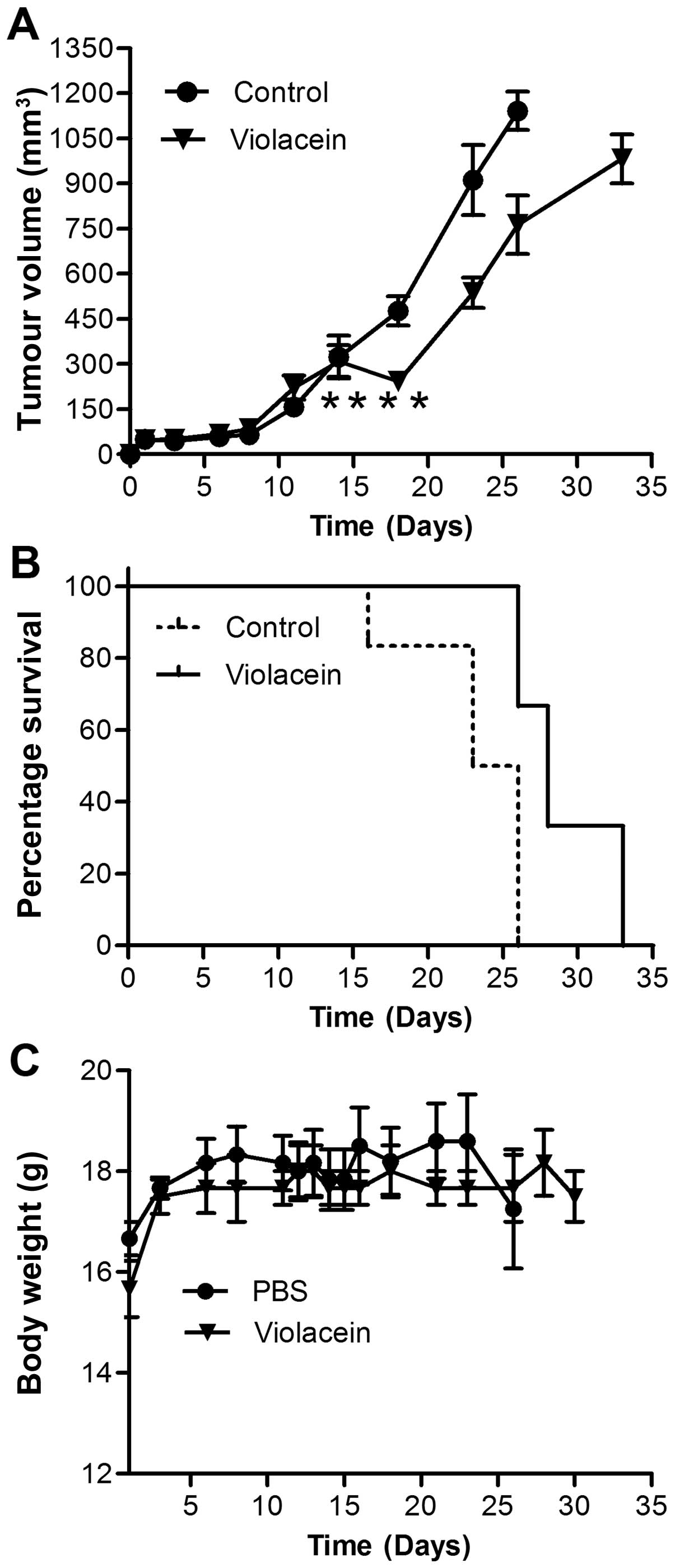|
1
|
Tabata K, Yamazaki Y, Okada M, et al:
Diarylheptanoids derived from Alpinia officinarum induce apoptosis,
S-phase arrest and differentiation in human neuroblastoma cells.
Anticancer Res. 29:4981–4988. 2009.
|
|
2
|
Uddin S, Khan AS and Al-Kuraya KS:
Developing curcumin into a viable therapeutic for lymphoma. Expert
Opin Investig Drugs. 18:57–67. 2009. View Article : Google Scholar
|
|
3
|
Wang TT, Schoene NW, Kim YS, Mizuno CS and
Rimando AM: Differential effects of resveratrol and its naturally
occurring methylether analogs on cell cycle and apoptosis in human
androgen-responsive LNCaP cancer cells. Mol Nutr Food Res.
54:335–344. 2010. View Article : Google Scholar : PubMed/NCBI
|
|
4
|
Li C, Hashimi SM, Cao S, et al: The
mechanisms of chansu in inducing efficient apoptosis in colon
cancer cells. Evid Based Complement Alternat Med.
2013:8490542013.PubMed/NCBI
|
|
5
|
August PR, Grossman TH, Minor C, et al:
Sequence analysis and functional characterization of the violacein
biosynthetic pathway from Chromobacterium violaceum. J Mol
Microbiol Biotechnol. 2:513–519. 2000.PubMed/NCBI
|
|
6
|
Pemberton JM, Vincent KM and Penfold RJ:
Cloning and heterologous expression of the violacein biosynthesis
gene cluster from Chromobacterium violaceum. Curr Microbiol.
22:355–358. 1991. View Article : Google Scholar
|
|
7
|
Andrighetti-Fröhner CR, Antonio RV,
Creczynski-Pasa TB, Barardi CR and Simões CM: Cytotoxicity and
potential antiviral evaluation of violacein produced by
Chromobacterium violaceum. Mem Inst Oswaldo Cruz. 98:843–848. 2003.
View Article : Google Scholar : PubMed/NCBI
|
|
8
|
Antonisamy P and Ignacimuthu S:
Immunomodulatory, analgesic and antipyretic effects of violacein
isolated from Chromobacterium violaceum. Phytomedicine. 17:300–304.
2010. View Article : Google Scholar
|
|
9
|
Antonisamy P, Kannan P and Ignacimuthu S:
Anti-diarrhoeal and ulcer-protective effects of violacein isolated
from Chromobacterium violaceum in Wistar rats. Fundam Clin
Pharmacol. 23:483–490. 2009. View Article : Google Scholar : PubMed/NCBI
|
|
10
|
Cazoto LL, Martins D, Ribeiro MG, Durán N
and Nakazato G: Antibacterial activity of violacein against
Staphylococcus aureus isolated from bovine mastitis. J Antibiot.
64:395–397. 2011. View Article : Google Scholar : PubMed/NCBI
|
|
11
|
Leon LL, Miranda CC, DeSouza AO and Durán
N: Antileishmanial activity of the violacein extracted from
Chromobacterium violaceum. J Antimicrob Chemother. 48:449–450.
2001. View Article : Google Scholar : PubMed/NCBI
|
|
12
|
Lichstein HC and Van De Sand VF: The
antibiotic activity of violacein, prodigiosin, and phthiocol. J
Bacteriol. 52:145–146. 1946.PubMed/NCBI
|
|
13
|
Bromberg N, Dreyfuss JL, Regatieri CV, et
al: Growth inhibition and pro-apoptotic activity of violacein in
Ehrlich ascites tumor. Chem Biol Interact. 186:43–52. 2010.
View Article : Google Scholar : PubMed/NCBI
|
|
14
|
de Carvalho DD, Costa FT, Durán N and Haun
M: Cytotoxic activity of violacein in human colon cancer cells.
Toxicol In Vitro. 20:1514–1521. 2006. View Article : Google Scholar : PubMed/NCBI
|
|
15
|
Ferreira CV, Bos CL, Versteeg HH, Justo
GZ, Durán N and Peppelenbosch MP: Molecular mechanism of
violacein-mediated human leukemia cell death. Blood. 104:1459–1464.
2004. View Article : Google Scholar : PubMed/NCBI
|
|
16
|
Kodach LL, Bos CL, Durán N, Peppelenbosch
MP, Ferreira CV and Hardwick JC: Violacein synergistically
increases 5-fluorouracil cytotoxicity, induces apoptosis and
inhibits Akt-mediated signal transduction in human colorectal
cancer cells. Carcinogenesis. 27:508–516. 2006. View Article : Google Scholar
|
|
17
|
Martins D, Frungillo L, Anazzetti MC, Melo
PS and Durán N: Antitumoral activity of L-ascorbic acid-poly-
D,L-(lactide-co-glycolide) nanoparticles containing violacein. Int
J Nanomed. 5:77–85. 2010. View Article : Google Scholar
|
|
18
|
Melo PS, Justo GZ, de Azevedo MB, Durán N
and Haun M: Violacein and its beta-cyclodextrin complexes induce
apoptosis and differentiation in HL60 cells. Toxicology.
186:217–225. 2003. View Article : Google Scholar : PubMed/NCBI
|
|
19
|
Melo PS, Maria SS, Vidal BC, Haun M and
Durán N: Violacein cytotoxicity and induction of apoptosis in V79
cells. In Vitro Cell Dev Biol Anim. 36:539–543. 2000. View Article : Google Scholar
|
|
20
|
Queiroz KC, Milani R, Ruela-de-Sousa RR,
et al: Violacein induces death of resistant leukaemia cells via
kinome reprogramming, endoplasmic reticulum stress and Golgi
apparatus collapse. PLoS One. 7:e453622012. View Article : Google Scholar : PubMed/NCBI
|
|
21
|
Saraiva VS, Marshall JC, Cools-Lartigue J
and Burnier MN Jr: Cytotoxic effects of violacein in human uveal
melanoma cell lines. Melanoma Res. 14:421–424. 2004. View Article : Google Scholar : PubMed/NCBI
|
|
22
|
Ahmetagic A and Pemberton JM: Stable high
level expression of the violacein indolocarbazole anti-tumour gene
cluster and the Streptomyces lividans amyA gene in E. coli K12.
Plasmid. 63:79–85. 2010. View Article : Google Scholar
|
|
23
|
Durán N, Justo GZ, Ferreira CV, Melo PS,
Cordi L and Martins D: Violacein: properties and biological
activities. Biotechnol Appl Biochem. 48:127–133. 2007. View Article : Google Scholar : PubMed/NCBI
|
|
24
|
Rosenberg SA, Spiess PJ and Kleiner DE:
Antitumor effects in mice of the intravenous injection of
attenuated Salmonella typhimurium. J Immunother. 25:218–225. 2002.
View Article : Google Scholar : PubMed/NCBI
|
|
25
|
Durán N, Antonio RV, Haun M and Pilli RA:
Biosynthesis of a trypanocide by Chromobacterium violaceum. World J
Microbiol Biotechnol. 10:686–690. 1994. View Article : Google Scholar : PubMed/NCBI
|
|
26
|
Rohwer N and Cramer T: Hypoxia-mediated
drug resistance: novel insights on the functional interaction of
HIFs and cell death pathways. Drug Resist Updat. 14:191–201. 2011.
View Article : Google Scholar : PubMed/NCBI
|
|
27
|
Tirino V, Desiderio V, Paino F, et al:
Cancer stem cells in solid tumors: an overview and new approaches
for their isolation and characterization. FASEB J. 27:13–24. 2013.
View Article : Google Scholar
|
|
28
|
Hashimi SM, Yu S, Alqurashi N, Ipe DS and
Wei MQ: Immunotoxin-mediated targeting of claudin-4 inhibits the
proliferation of cancer cells. Int J Oncol. 42:1911–1918.
2013.PubMed/NCBI
|
|
29
|
Cunningham C and Nemunaitis J: A phase I
trial of genetically modified Salmonella typhimurium expressing
cytosine deaminase (TAPET-CD, VNP20029) administered by
intra-tumoral injection in combination with 5-fluorocytosine for
patients with advanced or metastatic cancer. Protocol no: CL-017
Version: April 9, 2001. Hum Gene Ther. 12:1594–1596.
2001.PubMed/NCBI
|















